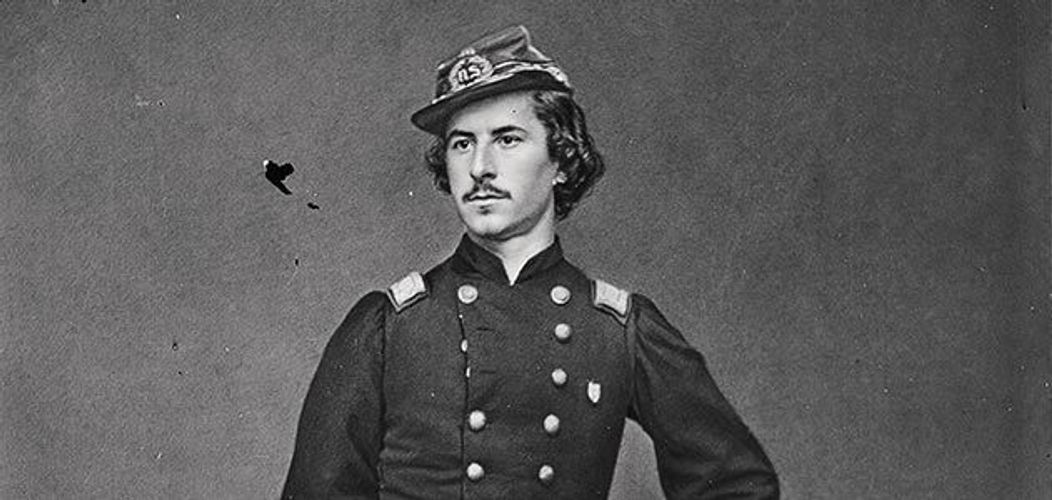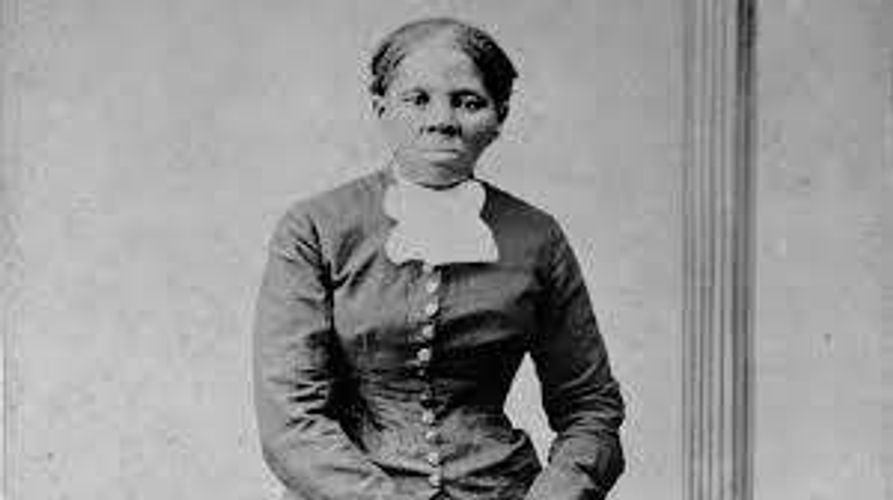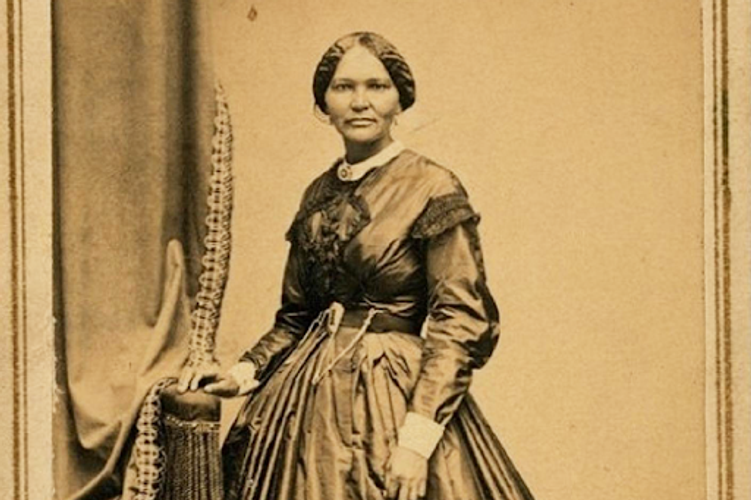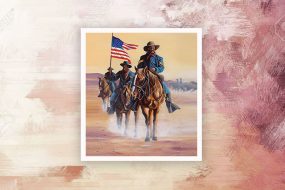Civil War Free

Civil War
Which was the first “Negro soldiers'” unit officially mustered into the United States Army during the Civil War?
First Regiment Louisiana Native Guards

The Confederate government of Louisiana had formed a militia consisting of free Black men led by their own officers. When this all-Black militia volunteered to join the Union Army, a high-ranking official transformed the Confederate militia into the First Regiment Native Louisiana Guards led by Black captains and lieutenants.
The first Negro regiment of the Union Army consisted of recruits from all of the following states EXCEPT which one?
Texas

The first authorized Black regiment—designated colored troops—consisted of recruits from Massachusetts, Tennessee, and South Carolina. None were recruited from Texas for this regiment.
In 1861, three enslaved men, Frank Baker, James Townsend and Sheppard Mallory, who had been leased by their masters to the Confederate Army, escaped to the U.S. Army lines. Prior to the war, these men would have been returned in compliance with a law that was now being ignored. What was this law?
Fugitive Slave Act of 1850

Prior to the war, any enslaved person who escaped was required to be returned by virtue of the Fugitive Slave Act of 1850. However, once the war was in progress the seceded states (the Confederacy) was considered a foreign country and the law was no longer valid. Other laws that then superseded the Fugitive Slave Act were the Confiscation Act of 1861, which treated escaped men and women as contraband of war, and the Act Prohibiting the Return of Slaves, which made illegal the return of any escaped man or woman. There was no Owners of Slaves Act.
Which of the following was not a synonymous name for “The War between the States”?
The War against Slavery

While “The War between the States” was known by many names, the most popular was “The Civil War.” Depending on political points of view, names were also used that indicated a point of view, such as, in the south it was called “The War of Northern Aggression” and in the north, “The War against Rebellion.” It was never called the “War against Slavery” since that was never its stated purpose.
Who was the heroic Black person who almost single handedly commandeered a northern ship that had been captured by a confederate privateer?
William Tillman

William Tillman, a free Black man, was a steward and cook on board the merchant schooner S.J. Waring during the Civil War. When the schooner was captured by the Confederacy, Tillman led a small insurrection and rescued the ship and crew and saved himself an others from inevitable slavery.
What role did enslaved Blacks generally hold in the Confederacy?
Laborers

While a number of Black men were forced to accompany their white Confederate masters, the enslaved men were not permitted any active participation in the war. They were brought along for the sole purpose of providing necessary labor behind the lines as cooks, teamsters and manual laborers.
Approximately how many Black soldiers died during the Civil War?
40,000

Approximately 40,000 Black soldiers died over the course of The Civil War—30,000 of infection or disease; about 10,000 in active duty.
Who was the escapee who ran a Confederate steamer out of the Charleston Harbor and delivered it to the Union Navy?
Robert Smalls

During the Civil War, Robert Smalls, an enslaved male, commandeered a heavily armed Confederate steamer and delivered 17 Black men, women and children safely from slavery to freedom.
What was the name of the law which declared that any enslaved person was free who escaped from rebel masters?
Confiscation Act of 1861

The Confiscation Act of 1861 authorized the confiscation of Confederate property (including enslaved men and women) by Union forces, especially if they had been used to support the Confederacy in any manner. Usually these were men who had been used by the Confederate Army as laborers.
What war time identification of Blacks became associated with the general in command of the Department of Virginia, Benjamin F. Butler?
Contraband

In August, 1861, Benjamin Butler initiated a policy whereby fugitive slaves were declared to be "contraband of war" if their labor had been used to aid the Confederacy in any way. This identified them as property taken from the enemy. Those found to be contraband were subsequently paid for their labor by the U.S. army and ultimately were emancipated.
What was the name of the organization started by Mary Todd Lincoln's dressmaker in Washington D.C. to assist fugitives coming to the city?
Contraband Relief Association
Elizabeth Hobbs Keckley, a former slave, purchased her freedom and became a skilled dressmaker for Mary Todd Lincoln, the President’s wife. Having sympathy for the plight of the fugitives arriving in Washington DC, she organized the Contraband Relief Association to provide help for them.
What happened to white commanders of Black soldiers in the Union Army when they were caught by Confederates?
They were imprisoned and often killed

As was done with Black soldiers fighting for the Union Army, White Union commanders were imprisoned and often killed.
When the Union army refused to admit Blacks, what immediate recourse did many take?
They joined the navy

Although Blacks fought in the Revolutionary War and unofficially in the War of 1812, prior to the Civil War, the U.S. Army did not accept Black soldiers. The U.S. Navy, however, from 1861, accepted African-Americans to serve as shipboard firemen, stewards, coal heavers and boat pilots. When the U.S. Army didn’t accept them, Black men turned to the U.S. Navy.
Who was the first escaped woman and Underground Railroad freedom fighter, to lead a raid during the Civil War?
Harriet Tubman

Prior to the Civil War, Harriet Tubman conducted thirteen missions to rescue over seventy enslaved people and helped John Brown recruit men for his revolt at Harpers Ferry. However, during the Civil War, she served as an armed scout and spy for the Union army and was the first woman to lead a raid when she guided the raid at Combahee Ferry and liberated more than 700 enslaved people.
What was the name of Mrs. Lincoln’s Black dressmaker whose son was killed in combat on a Missouri battlefield?
Elizabeth Keckley

Elizabeth Hobbs Keckley, a former slave, purchased her freedom and became a skilled dressmaker for Mary Todd Lincoln, the President’s wife. Her son George Kirkland, who was more than three-quarters white, enlisted as a white man in the Union Army in 1861 after the war broke out and was killed in action on August 10, 1861.
On what date did President Lincoln sign the Emancipation Proclamation?
January 1, 1863

President Lincoln signed the official Emancipation Proclamation on January 1, 1863; however, he issued a preliminary Emancipation Proclamation on September 22,1862
How many southern states made up the Confederacy?
11

Eleven southern states joined the Confederacy to fight against the Union. The states and the dates which they left the Union are as follows: 1. South Carolina, December 20, 1860; 2.Mississippi, January 9, 1861; 3. Florida, January 10, 1861; 4. Alabama, January 11, 1861; 5. Georgia, January19, 1861; 6. Louisiana, January 26, 1861; 7. Texas, February 1, 1861; 8. Virginia, April 17, 1861; 9. Arkansas, May 6, 1861; 10. North Carolina, May 20, 1861; 11. Tennessee, June 8, 1861.
Approximately how many Black officers were commissioned during the war?
Fewer than 125

The exact number of Black commissioned officers during the Civil War seems to be unknown, but some records state 80 commissioned officers, while others state as many as 100 Black commissioned officers. However, based on all records, there were no more than 125 Black officers commissioned.
Who was the last Black person to receive the navy Medal of Honor during the Civil War?
Aaron Anderson on the Wyandanke

Aaron Anderson was a sailor on the USS Wyandanke in the Union Navy during the Civil War. On June 5, 1865, one month before the end of the Civil War, he was awarded America's highest military decoration, the Medal of Honor, and became the last Black person to receive this honor during the Civil War.
Why was the information obtained from the runaway Black man, William Jackson, who arrived into the Union camp at Fredericksburg so important?
He had been President Davis’ coachman

William A. Jackson was one of the most successful unofficial spies in the Union forces during the Civil War because he had been a trusted coachman and house-man for Jefferson Davis, President of the Confederacy, and had been privy to many conversations between President Davis and others.
What percentage of the total U.S. army during the Civil War was made up of African American soldiers?
10%

By the end of the Civil War, approximately 10% of the Union army was comprised of Black men or nearly 180,000, about half of whom were former enslaved men from Confederate states.
How much money did Black soldiers earn during the Civil War?
10 dollars per month

African American soldiers earned $10.00 per month and had to pay a $3.00 clothing allowance per month which covered their uniforms. White soldiers earned between $13.00-$16.00 per month and paid no clothing allowance.
Which abolitionist said these words in support of Blacks being used by the Union army: “Once let the black man get upon his person the brass letters, U.S.; let him get an eagle on his button, and a musket on his shoulder and bullets in his pocket and there is no power on earth which can deny that he has earned the right to citizenship?”
Fredrick Douglass

Frederick Douglass said these words in his argument that enlisted black soldiers would help the North win the war. Abraham Lincoln was initially against the idea but changed his mind two years into the war.
What woman abolitionist and novelist met with Abraham Lincoln for assurance that he was serious about issuing the Emancipation Proclamation?
Harriet Beecher Stowe

Harriet Beecher Stowe was a White abolitionist and the author of Uncle Tom’s Cabin, a romanticized anti-slavery novel that helped to radicalize northerners against slavery. She met with President Lincoln in 1862 and changed her perception of him from highly critical to admiration once he assured her of his commitment to freeing the enslaved men and women of the South
Which activity did Black soldiers engage in more than white soldiers?
Clean the campgrounds

Initially, the only duties Black soldiers were assigned during the Civil War were to clean the campgrounds, build latrines and perform other menial tasks so that White soldiers would not have to perform them.
The War Between the States was fought primarily over slavery; here you can learn how Black people, both enslaved and free, played important roles in this U.S. war that led to the emancipation of enslaved Africans.
Related Posts
Login
Upgrade your Membership
This Quizz Only For Paid Members
Upgrade Your Account First




